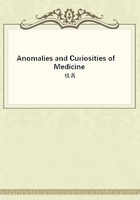
第74章
Plutarch, in his "Lesser Parallels," says that Aristonymus Ephesius, son of Demonstratus, being tired of women, had carnal knowledge with an ass, which in the process of time brought forth a very beautiful child, who became the maid Onoscelin. He also speaks of the origin of the maiden Hippona, or as he calls her, Hippo, as being from the connection of a man with a mare.
Aristotle mentions this in his paradoxes, and we know that the patron of horses was Hippona. In Helvetia was reported the existence of a colt (whose mother had been covered by a bull)that was half horse and half bull. One of the kings of France was supposed to have been presented with a colt with the hinder part of a hart, and which could outrun any horse in the kingdom. Its mother had been covered by a hart.
Writing in 1557, Lycosthenes reports the mythical birth of a serpent by a woman. It is quite possible that some known and classified type of monstrosity was indicated here in vague terms.
In 1726 Mary Toft, of Godalming, in Surrey, England, achieved considerable notoriety throughout Surrey, and even over all England, by her extensively circulated statements that she bore rabbits. Even at so late a day as this the credulity of the people was so great that many persons believed in her. The woman was closely watched, and being detected in her maneuvers confessed her fraud. To show the extent of discussion this case called forth, there are no less than nine pamphlets and books in the Surgeon-General's library at Washington devoted exclusively to this case of pretended rabbit-breeding. Hamilton in 1848, and Hard in 1884, both report the births in this country of fetal monstrosities with heads which showed marked resemblance to those of dogs. Doubtless many of the older cases of the supposed results of bestiality, if seen to-day, could be readily classified among some of our known forms of monsters. Modern investigation has shown us the sterile results of the connections between man and beast or between beasts of different species, and we can only wonder at the simple credulity and the imaginative minds of our ancestors. At one period certain phenomena of nature, such as an eclipse or comet, were thought to exercise their influence on monstrous births. Rueff mentions that in Sicily there happened a great eclipse of the sun, and that women immediately began to bring forth deformed and double-headed children.
Before ending these preliminary remarks, there might be mentioned the marine monsters, such as mermaids, sea-serpents, and the like, which from time to time have been reported; even at the present day there are people who devoutly believe that they have seen horrible and impossible demons in the sea. Pare describes and pictures a monster, at Rome, on November 3, 1520, with the upper portion of a child apparently about five or six years old, and the lower part and ears of a fish-like animal. He also pictures a sea-devil in the same chapter, together with other gruesome examples of the power of imagination.
Early Teratology.--Besides such cases as the foregoing, we find the medieval writers report likely instances of terata, as, for instance, Rhodiginus, who speaks of a monster in Italy with two heads and two bodies; Lycosthenes saw a double monster, both components of which slept at the same time; he also says this creature took its food and drink simultaneously in its two mouths. Even Saint Augustine says that he knew of a child born in the Orient who, from the belly up, was in all parts double.
The first evidences of a step toward classification and definite reasoning in regard to the causation of monstrosities were evinced by Ambroise Pare in the sixteenth century, and though his ideas are crude and some of his phenomena impossible, yet many of his facts and arguments are worthy of consideration. Pare attributed the cause of anomalies of excess to an excessive quantity of semen, and anomalies of default to deficiency of the same fluid. He has collected many instances of double terata from reliable sources, but has interspersed his collection with accounts of some hideous and impossible creatures, such as are illustrated in the accompanying figure, which shows a creature that was born shortly after a battle of Louis XII, in 1512; it had the wings, crest, and lower extremity of a bird and a human head and trunk; besides, it was an hermaphrodite, and had an extra eye in the knee. Another illustration represents a monstrous head found in an egg, said to have been sent for examination to King Charles at Metz in 1569. It represented the face and visage of a man, with small living serpents taking the place of beard and hair. So credulous were people at this time that even a man so well informed as Pare believed in the possibility of these last two, or at least represented them as facts. At this time were also reported double hermaphroditic terata, seemingly without latter-day analogues. Rhodiginus speaks of a two-headed monster born in Ferrari, Italy, in 1540, well formed, and with two sets of genitals, one male and the other female. Pare gives a picture of twins, born near Heidelberg in 1486, which had double bodies joined back to back; one of the twins had the aspect of a female and the other of a male, though both had two sets of genitals.